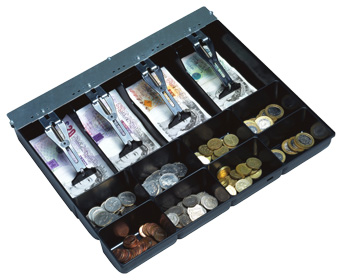It all starts with data, Peter Fisher, general manager of National Business Crime Solution (NBCS), told a Security Institute webinar this morning. By that he meant both understanding the scale of the problem of ‘myriad’ theft and fraud against high street businesses and supply chains – and doing something about it.
Data collection starts on the shop floor, he said, whether by non-security staff, security officers or store management. Every single incident must be reported, even if it is a trespass without a theft or fraud carried out, or a ‘deter’ (a known offender put off by a member of staff intervening), because ‘it if isn’t reported, it didn’t happen’, as he put it.
The quality, not only the quantity of data that gives a full picture of crimes against a business, also matters, he went on. A wrongly-spelt name, even of one letter, in software terms can mean that when you run an analysis of an offender or a group, the cases in the wrongly-spelt name are missed. Not only does a crime have to be reported internally, but to police, to get a crime reference number or an incident number, because if not, when NBCS (or anyone else) picks up the case, it can’t do anything without such a reference.
Peter spelt out what best practice might look like for the combatting of crime against business: cloud based electronic reporting, possibly app-based; mandatory fields for staff to fill in to give key data – but not too many, because asking non-security staff to key in too much for a report may make it too much of a burden; and such reporting ought to be possible from the shop floor, so that staff remain there as a ‘visual deterrent’. An incident form should be submitted with a still image of the suspect, because that will make it far more likely that an offender can be identified. As some businesses do not have such software, hence NBCS’ own, provided by Zinc Systems, also the firm behind the reporting software launched in London by the City Security Council, featured in the February print edition of Professional Security magazine.
Peter Fisher also went into detail about data protection and how such sharing of crime data – including of automatic number plate recognition of travelling offenders’ vehicles – is lawful under the GDPR (the EU-wide rules, made law in the UK under the Data Protection Act 2019). A shopping centre may use ANPR for the issuing of fines for cars that overstay – but it could also be used to trigger when a known offender parks, he said, and passed to businesses to forewarn them. Because for crime prevention, security officers are absolutely vital, Peter said – data being of use to place officers where they are most needed, to justify spend on them.
He gave some cases of how NBCS works as a go-between, between police forces and business members. It’s led to travelling offenders (whether thieves, or ‘sleight of hand’ gangs from eastern Europe, defrauding at counters) being charged and convicted of multiple offences; whereas, if they had been caught for an offence in a single town or city, they would not have had their crimes joined up.
More in the June print edition of Professional Security magazine.
More about NBCS and Zinc, on this link.










